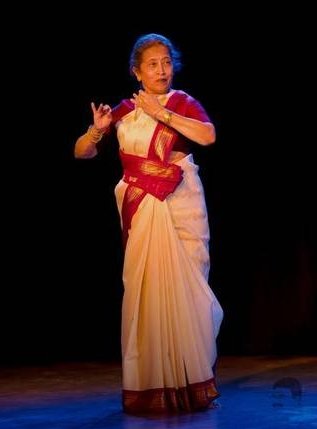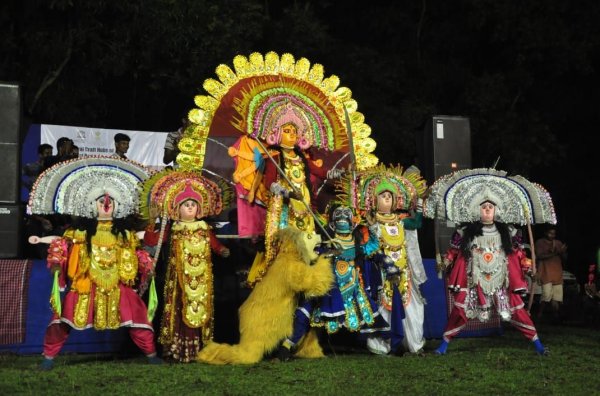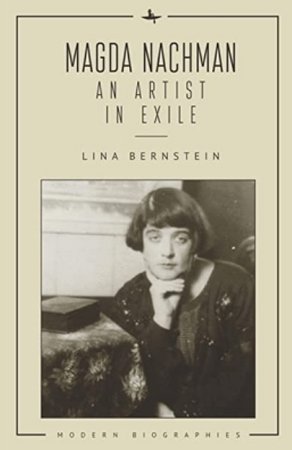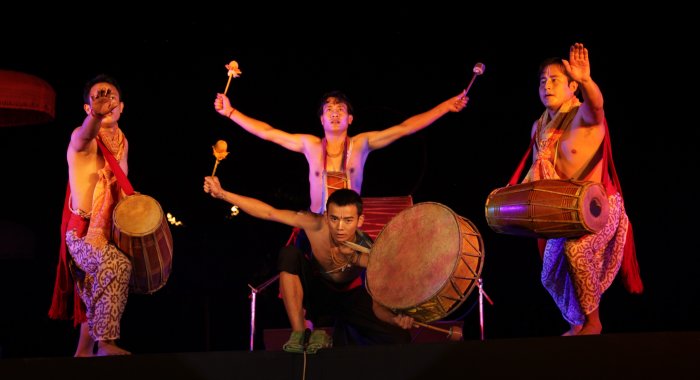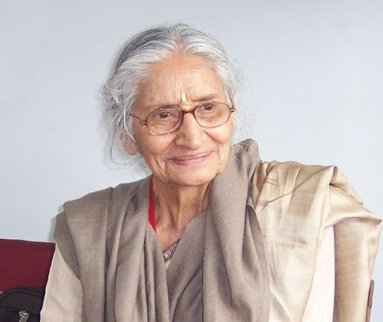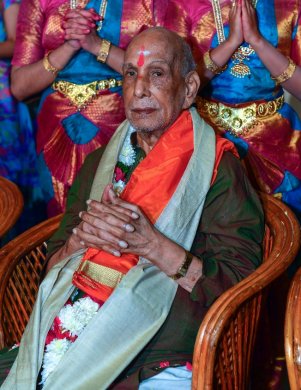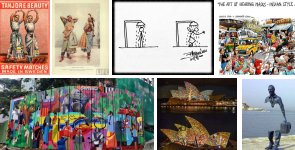Today's virtual viewing of naatya performances reminds me of the Hollywood movie titled "Honey, I shrunk the kids" (1989). About 15 years ago when I did a lecture demonstration for the august audience of the Madras Music Academy, I explained the reason for the limited audience for naatya performances. Naatya is an intimate theatre and Rasotpathi (enjoyment) happens only when one watches the artistes closer. Proximity to the performing arena enhances viewing pleasure and makes it enjoyable. Music concerts have larger listeners because the amplification brings the performing artists' voice and sound of instruments much closer to the Rasika's ears, so they could enjoy the music even sitting at the last row of a proscenium stage or an open arena. Light music concerts attract a much larger audience because it is louder, so a stadium-like place gets filled up. So the bigger and larger the size, has a better impact on the human mind. A solo performance has lesser attendance than a group naatya show.
Read more in the sitePlease provide your name / email id along with your comment. Anonymous and derogatory comments will be removed.
Thursday 29 October 2020
Tuesday 27 October 2020
Interview - Shama Bhate: Reclaiming the stage - Nikhil Ravi Parmar
The pandemic has been no different as an experience for all artistes, but with the robust will and fierce determination to inspire, Nadroop explores different possibilities in the ever-changing times of technology. Through curation, creation and challenges, Nadroop dives into the digital realm reclaiming the stage in their first ever online festival to celebrate the essence of Kathak. ROOPBANDH is scheduled for the 7th & 8th November 2020.
Saturday 24 October 2020
12th edition of Erasing Borders Dance Festival 2020 - Footloose and fancy free with Dr.Sunil Kothari
From September 20 to 27, 2020, Indo-American Arts Council, New York, presented the 12th edition of Erasing Borders Dance Festival. Moving to a virtual format has its own artistic challenges. Deepsikha Chatterjee, the new director of the festival, says that for the first time, in its 12th year the festival has brought 11 artistes together in a virtual borderless. She further informed that it had more than 200,000 viewers in total with approximately 17,000 tuning in each day of the festival.
I viewed the performances featuring interviews with dancers and curators Uttara Asha Coorlawala, Parul Shah, Deepsikha Chatterjee, Shruti Mohan and various other interviewers. The dancers were introduced and asked about the dance form, its history, process of creating and then screening of the performance.
Friday 23 October 2020
Jewel from Manipur treasure trove - The Eastern Eye: Column by Dr.Utpal K Banerjee
Ima (meaning 'Mother' in Manipuri) presented online on October 16 by Bimbavati is a startlingly new choreographic work of hers, with innovations seen in multiple dimensions. At the outset confides Bimbavati, "Manipur has much more than meets the eye. Although Manipur is popularly associated with Vaishnavism and the performing traditions revolving around the life of Lord Krishna, it is a part of the Himalayan Tantric belt; Shakti cult also plays a vital role in shaping the land's cultural edifice". The twin spirit is inextricably interwoven in the crystalline presentation.
Wednesday 21 October 2020
Naach, Nachman; watch, watchman! - Dance Matters: Column by Ashish Mohan Khokar
So when a new book, a real book - as in printed on paper version - nicely put together - on dance, yes - that most marginalized of art forms - hits the stands, is it time for celebration? Yes, especially if it is well researched, well written and reasonably well published and affordable.
Sunday 18 October 2020
Fine filigree of vintage Manipuri - The Eastern Eye: Column by Dr.Utpal K Banerjee
Saturday 17 October 2020
Navadurga and Colors of Navaratri
Sharad Navaratri or Maha Navaratri is commonly celebrated during the Indian month of Ashvina that commences from the first day of the lunar fortnight. As per the English calendar, it usually falls in the months of September and October. The festival is celebrated for nine nights (this year from Oct 17-25) and devotees pray, take part in the Dandiya Raas and Garba and offer prasad to please Goddess Durga.
According to some Hindu texts such as the Shakta and Vaishnava Puranas, Navaratri theoretically falls twice or four times a year. Of these, the Sharad Navaratri near autumn equinox (September-October) is the most celebrated and the Vasanta Navaratri near spring equinox (March-April) is the next most significant to the culture of the Indian subcontinent. In all cases, Navaratri falls in the bright half of the Hindu luni-solar months. The celebrations vary by region, depending on the creativity and preferences.
Bangalore based dancer Sathyanarayana Raju displays his creativity for NAVADURGA, his take on the NINE COLOURS OF NAVARATRI with jewellery by Asha Nandkumar and makeup by Shekar Rajendran.
Thursday 15 October 2020
Interview - Devi Diaries: Part 1
Inspired by the writings of Sri Aurobindo's 'The Mother,' Narthaki.com initiated DEVI DIARIES, inviting artistes to share their personal experiences and enhance it with a brief video presentation of their favorite Goddess or a real life female heroic figure.
The basic questions asked were:
Who is your favorite Goddess figure / why?
At what point in your life did the particular Goddess become your favorite? / Do you recall any particular incident connected with the Goddess?
How did you celebrate Navaratri in the past? / What are your plans for this year?
Read more in the site
Friday 9 October 2020
Outdancing our exceptional times - The Eastern Eye: Column by Dr.Utpal K Banerjee
The great pop singer Bob Dylan – a Nobel Laureate to boot – sang famously, “Times, they’re a-changing”. Of course, Shakespeare had pronounced half a millennium back, “The times are out of joint”. Having spent a life-span of 86 years, this critic has seen two tumultuous times: one around 1947, the year of Independence and the few preceding years of nationalist movement. The other is right now in 2020, around an incomprehensible pandemic round the entire globe.
Thursday 8 October 2020
A towering post-Independence presence in Indian art history and aesthetics is no more - Taalam: column by Leela Venkataraman
Saturday 3 October 2020
Obit/Tribute - Guru VS Ramamoorthy (1920 –2020) - Ananda Shankar Jayant
We artistes at Hyderabad were blessed to receive his blessings as recently as December 19, 2019, when we celebrated the amazing and loving centenarian Guru. He would attend all our programs, come backstage, bless us before the show and afterwards, and then call us next day, for detailed praise and blessings.
Thursday 1 October 2020
Anita says...October 2020
Sometimes I open the window
And the dusk rain touches my face,A lightness on the edges of knowing
That when this frozen summer fails, children locked
Without knowledge of tomorrow's light
Will leap as the sun breaks, molten though their corridors
Night fleeing rapidly from their eyes -
While mothers and fathers hurtling with the hurricane
Will struggle
To stand still, struggle to let go the darkness...
- BEYOND THE NIGHT
by Anu Majumdar, Auroville
I begin with the piercing beauty of words from my friend and take the liberty of slicing her luminous poem into two parts - to envelop this mostly "non joyous" missive with her ray of hope. Like gentle arms that holds a troubled soul close.

